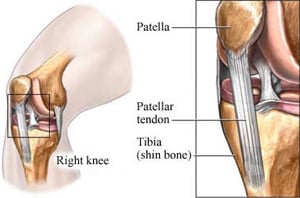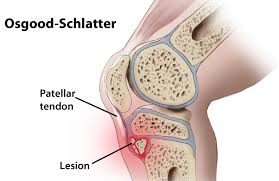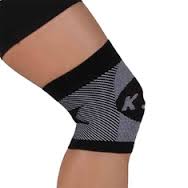Osgood-Schlatter Disease
Osgood-Schlatter Disease is a childhood repetitive-use injury that causes a painful lump below the kneecap. It is also known as apophysitis of the tibial tubercle. The condition is a very common cause of knee pain in children and young athletes usually between the ages of 10 and 16. A It occurs due to a period of rapid growth, combined with a high level of sporting activity, involving kicking, running, or jumping. These kinds of sports cause repeated and vigorous use of the quadriceps muscles.

It causes pain and swelling just below the knee. Young teenagers, particularly boys, are the most commonly affected. It is uncommon over the age of 16.
The main symptom is pain just below the kneecap (patella). The severity of the pain tends to flare up and down. It is usually worse during, and just after, activity. It tends to ease with rest.

The pain typically lasts a few months, but sometimes persists until you have finished growing. This means that in some cases it can last up to two years.
A small, tender, bony bump may develop a few centimetres below the kneecap. This occurs where the patella tendon attaches to the tibia (shin bone). The small bump is permanent, although in time it becomes painless. The actual knee joint is not affected, so knee movements are normal. Symptoms usually occur just under one kneecap, but in up to one in three cases it affects the area under both kneecaps.


Causes of Osgood-Schlatter Disease
Osgood-Schlatter syndrome is primarily an over use injury although certain factors can increase the likelihood of sustaining this condition.
Age – It is more likely to affect boys aged around 13 to 15 years old than girls, although girls certainly can be affected and if they are it is more likely to occur earlier at about aged 10 to 12 years old. it is often put down to growing pains in knees. Obviously this is a general guide and ages can vary. It occurs due to a period of rapid growth, combined with a high level of sporting activity. Osgood-Schlatter in adults can occur, especially if it has not been looked after during teenage years but is more unusual.
Activity – As the young athletes bones grow quickly, it can take some time for the muscles and tendons to catch up. These changes result in a pulling force from the patella tendon, on to the tibial tuberosity at the top of the shin. This area then becomes inflamed, painful and swollen. This is frequent in younger people because their bones are still soft and are not yet fully grown. It is seen more often in children involved with running and jumping activities which put a much greater strain on the patella tendon.

See the Foot and Ankle Clinic about Osgood-Schlatter Disease
Podiatrists at The Foot and Ankle Clinic have vast experience in diagnosing and treating Osgood-Schlatter Disease and typically this treatment is very successful but involves a multifactorial approach.
At the Foot and Ankle Clinic our highly qualified team of Podiatrists are all members of the Australian Podiatry Association and offer a combined 50 years’ experience. They are trained to diagnose and effectively treat Osgood-Schlatter Disease via a range of treatments.
Put your feet in our hands! See us today in Chadstone, Moe, Sale, Traralgon, Warragul & Online Store and Retail Enquiries. NO REFERRAL NEEDED!.


